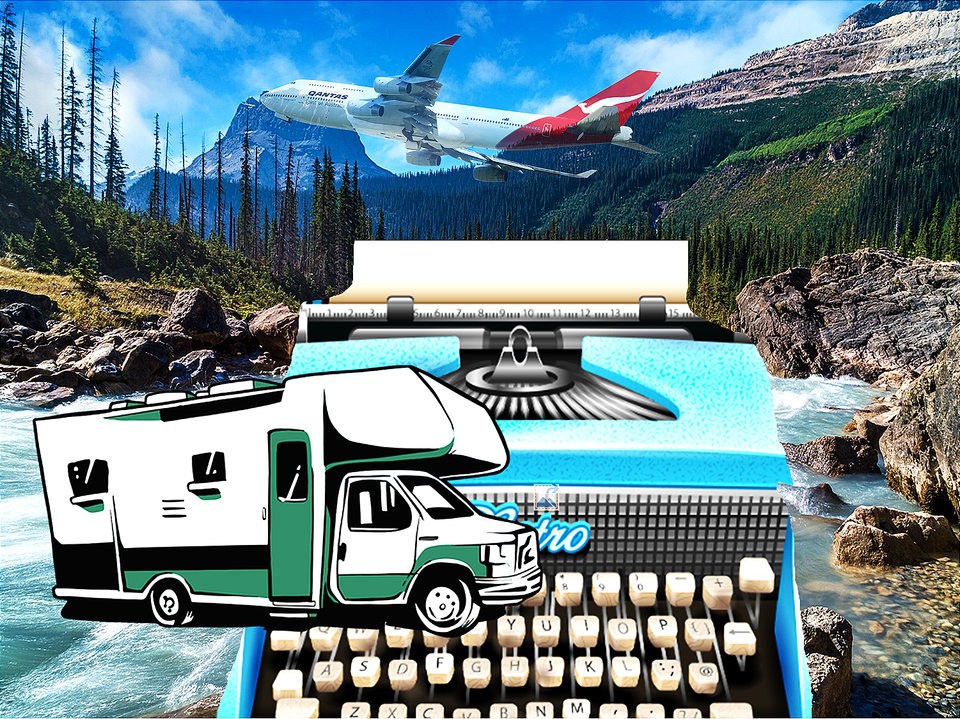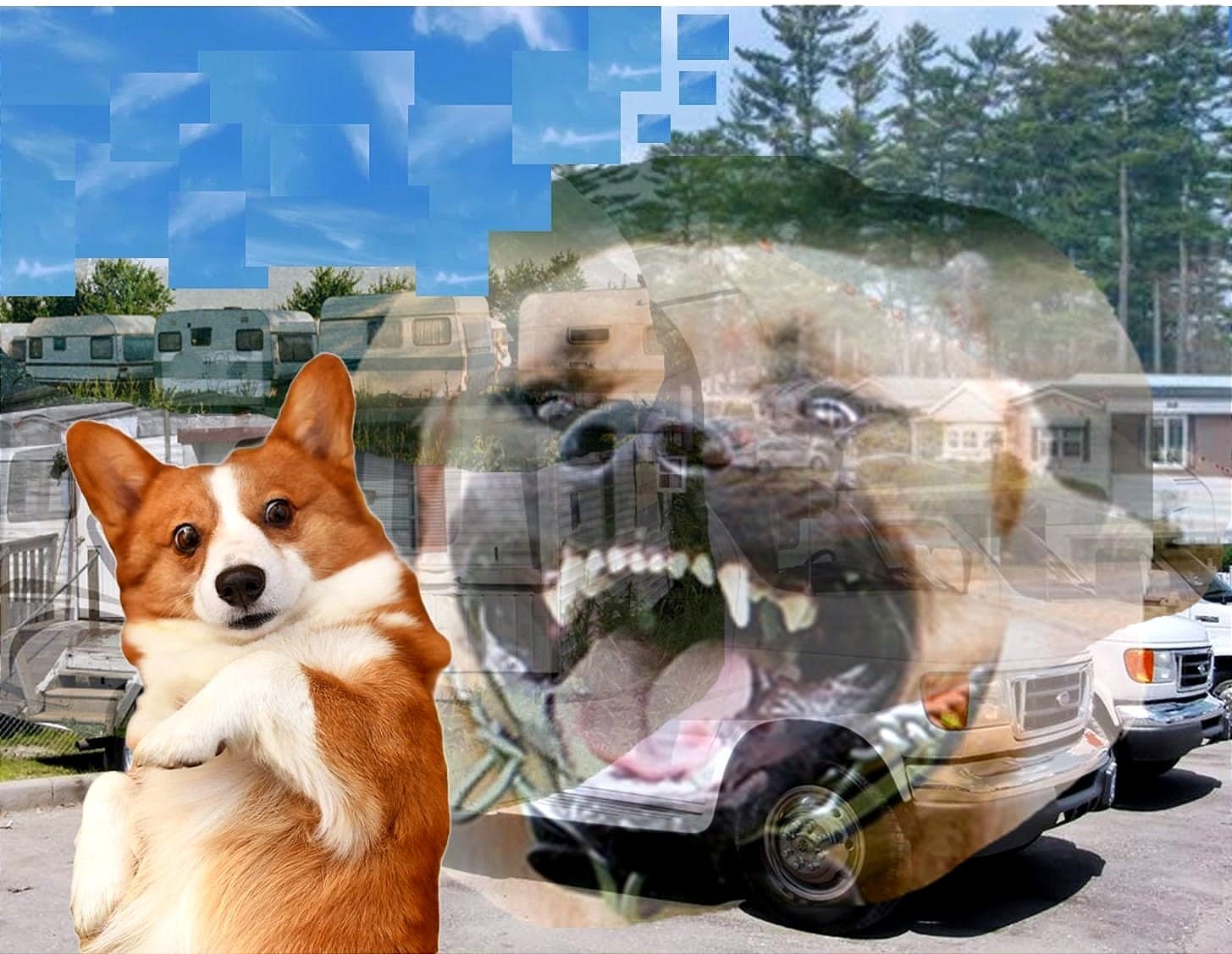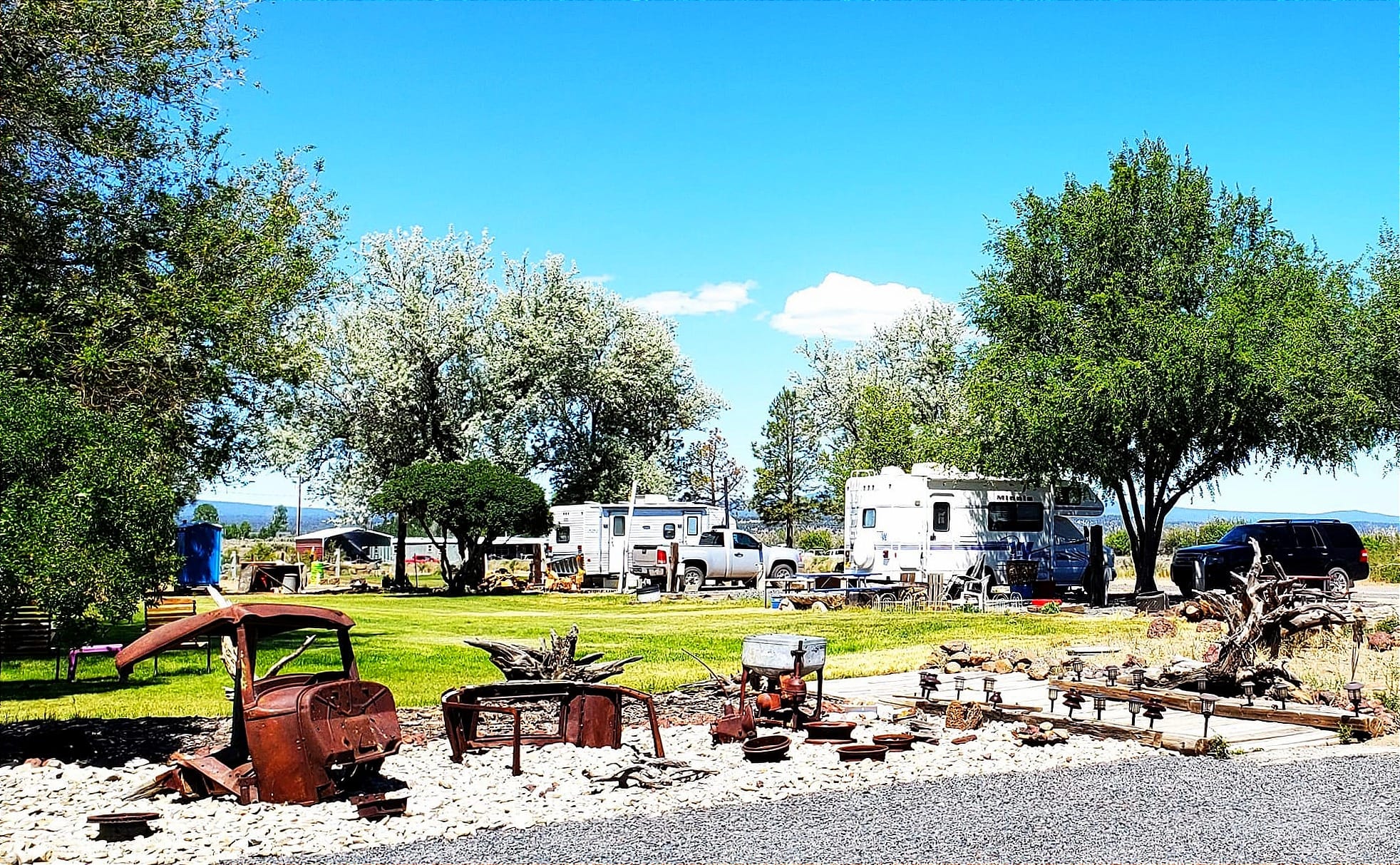A Distance Abridged: Writing Our Reflections from the Road

For those who enjoy examining the practice of nonfiction writing, analyzing the complex beauty of the craft to understand it more fully, this piece will be of interest. It chronicles excerpts from my life as a municipal park ranger in San Diego, a career from which I retired in 2022, and continues with a few travel memories and reflections. Using these subjects as a point of departure, we will explore the memoirist's work, from the process of recounting events and examining sources to the task of notetaking and selecting themes.
I will premiere my reflections on the culture and architecture of 1970s Los Angeles in a few weeks, as the summer approaches. As always, I thank you for your readership and wish you a pleasant day, as you discover the wonders of each new moment. Cheers!
The most obvious writing endeavor for a traveler involves journaling, gathering words and impressions, perhaps sketching images and collecting bits of material culture, as opportunities arise. Indeed, found objects convey their own language, recounting our travels and serving new purposes, a leaf for a bookmark or a shimmering piece of granite for a paperweight. Mementos abound. As for the journaling process, many entries remain personal and fragmentary, while others grow into rich literary expressions. With these ideas in mind, I reflect on my own experiences as an American retiree and motorhome nomad, focusing on two essential issues of memoir writing. The first pertains to genre and why, as authors, we choose to compose reflections rather than novels. Secondly, I consider the subject of truth and how we balance it against the artistic license of storytelling. By abridging distance for our readers, recalling experiences and making them tangible from a narrative standpoint, we embark on the journey of writing from the road.
In 2022, I retired from a career I had enjoyed for two decades, patrolling large swathes of urban land as a City of San Diego park ranger. During this time, I also worked as a freelance writer and graphic artist, in addition to teaching creative writing through the parks department. Day after day, I cared for public land and gathered material for my artistic grist mill. To a large extent, each patrol shift was a journey into profound and sometimes disturbing experiences, about which I wrote for literary magazines as personal essays rather than fiction pieces. To my mind, the former lends itself to academic digressions, incidental observations, and the incorporation of important facts, offering more of a universal point of view. At any rate, retiring from an exciting patrol career led quickly to the adventure of motorhome travel, seeing the American Southwest and Pacific Northwest from a writer’s perspective.
The Journey Begins
After purchasing my RV, I spent the winter of 2023 in Apache Junction, Arizona at the KOA, where I met travel nurses and linemen, fellow retirees, and a host of snowbirds from Canada and the eastern United States. I even had occasion to enjoy campfire chats with retired law enforcement officers, all of us free to laugh at our respective departments and celebrate shared experiences. Beyond this, I discovered a multitude of landscapes as they transformed from season to season, an ongoing tour of all things beautiful and inspiring. In my experience, these wonders can be captured effectively through the process of journal keeping. Then, after a time of reflection, entries can be transformed into formal essays.
The content of my journals varies widely, as do the occurrences of life on the road, from the joy of watching a cardinal in a mountain campground to the horror of seeing an 80-pound pit bull attack my corgi/golden retriever, an episode from my journey through Price, Utah. I'll begin with the joys of watching a cardinal perch in my campsite one February morning in the Superstition Mountains.
As it happened, I awoke early to make coffee and enjoy a walk through the campground, studying an array of mountain shadows before my neighbors began to stir. As the early chill gave way to winter sun, I noticed a magnificent bird approach, shades of red shifting with the frenetic movement of its wings, like something out of a dream montage or a vivid memory. Then, as the moment faded, a jogger passed by and remarked on the spectacle, a cardinal taking flight through the Superstitions. Glorious. Then, over a year later, I encountered a far less agreeable creature in the shadow of Southern Utah's rock formations.
In essence, the scenario was very simple, involving a convicted felon who allowed his rampaging pit bull to disrupt the peace of an otherwise pleasant RV park. The incident took place as I walked one evening, with my dogs dutifully trotting before me. Without a moment's warning, a creature of malicious intent darted from a nearby trailer--with nearly preternatural fury--and grabbed my corgi by her throat.
By the grace of God, I was able to wrestle the pit bull and repeatedly pry its jaws open with my fingers in order to free my pet, a drama which unfolded in the peculiar slow motion of terror. Eventually, after biting me in the back and thigh, the attacker grew frustrated and confused, at which point its owners casually emerged from their trailer.

I mention these two examples--a mountain cardinal contrasted to a vicious pit bull--because of their vast differences, both conveying the spectrum of emotions we experience on the road. On so many levels, the extremes of nomadic life teach us to write cogently, as if conducting a tour of our most compelling memories. And what about the many stylistic options available to us as nonfiction writers?
While the former experience occasioned a poetic reflection, celebrating the idylls of nomadic life, the latter required journalistic detail, both in my report to the Carbon County Sherrif’s Department and to the readers of my website. In the interests of warning fellow travelers about hazards--the secret dangers of unfamiliar places and their inhabitants--it was best to utilize an objective tone insofar as I could. And, in case you are wondering, things actually turned out well for my little dog. Her punctured lung and sprained paw healed beautifully, although she still suffers from nightmares on a regular basis, frantically squealing and attempting to run while in the embrace of sleep.
Further Reflections on Method: Using Notes
Whether you carry a notebook and pen, or record experiences electronically, notetaking is essential; it facilitates documentation and, of no less importance, aids in organizing our ideas and creative inspirations. The substance of my pit bull report eventually became material for an essay, moving easily from the realm of journalism to memoir. In the end, the incident proved to be a creative opportunity, as I translated the who, what, why, when, and where into a more personal narrative, something of universal interest to animal lovers and travelers alike. Sometimes, by happenstance, events unfold before us, and we simply write them down as elements of personal history. However, in other cases, we can use a more deliberate approach by interviewing the people we encounter and preserving their stories. I recall one such occasion in vivid detail.

While spending a summer in Silver Lake, Oregon, I stayed at a remote RV park, situated near the Deschutes National Forest. The owner’s husband had been a rodeo cowboy and rancher, working throughout Oregon, Idaho, and Northern California for decades. During his career, he broke numerous bones, often receiving care from country doctors on their front porches, everyone laughing and dripping tobacco juice long into the night. In retirement, the jovial cowboy rides his shiny blue tractor through the fields, working the land diligently as seasons change. He was always happy to discuss the many injuries he sustained bull riding, the legendary barbeques of the circuit, and the adventures of his autumn hunting trips. The rancher’s life story unfolded throughout the course of multiple conversations, entertaining bits of oral history. From there, many of his narratives adorned the essays I shared with my subscribers. Whether taking notes as dramatic events unfold, or conducting interviews, writing from the road is always compelling and rife with challenges. Now, we will examine nonfiction writing in greater detail, referencing academic analysis of the subject.
Insights from Vivian Gornick and Michael Steinberg
With the examples of experience, reflection, and method discussed above, we find a point of departure for further inquiry; specifically, we consider why a traveler would write nonfiction as opposed to novels. Perhaps it pertains to the impact one hopes to have on the world. Jack Kerouac, for example, used his journey through postwar America to develop plots and psychologically complex characters, his prose mimicking the melodic intrigues of jazz. As a groundbreaking novelist, his aim had more to do with storytelling than conveying facts, as he captivated readers with discordant strains of language and shattered social conventions. But what about the memoirist who wishes to convey a more factual narrative? For a deeper look at the issue of genre, we turn to an article by Vivian Gornick.
Originally published in The Women’s Review of Books, July 1996, “Why Memoir Now?” is as relevant today as it was decades ago. She begins by noting that “modernism has run its course,” and the richness of narratives rooted in context is gone, having given way to novels where voice prevails. In such works, we find a distant narrator, a voice removed from historical circumstances, who tells the story of personal experiences and emotions. In contrast, a memoir locates the reader in specific circumstances, social contexts being preserved as authentically as possible. The same can be achieved with a personal essay rich in descriptive texture. In both cases, one can develop a narrative that depicts historical and social elements concretely, rather than presenting the abstract themes of fiction. And, as we will see, this creates an interesting problem.
If the waning of modernism generates a longing for something fresh, for the directness of contextualized storytelling, we must inquire about the challenges of this method, the extent to which events can be faithfully retold. In short, how can a nonfiction author preserve factual truth? In the fall 2001 issue of Writing on the Edge, Michael Steinberg addressed the challenges faced by memoirist in “Writing Literary Memoir: Are We Obliged to Tell the Real Truth?” He states:
Someone who believes that memoir should be an accurate, literal rendering of the past will compose a different kind of work from a writer who sees memoir as a form of self-exploration. A writer who positions herself as a witness-interpreter will see a reality different from that of a writer who places himself at the center of his own story.
This nuanced perspective of genre is important to understand, as it bears strongly on the issue of accurate reporting. In my own work, I sometimes take artistic license to embellish the glory of sunsets and mountain ranges, while endeavoring to report the facts of my misadventures accurately. Whether we attempt to write literal renderings—which are impossible to achieve—or pursue self-exploration, our task is complex and fraught with pitfalls. Notwithstanding, the various dimensions of nomadic life are invaluable to all writers; wanderers have a specific set of ideas to share.
Writing from the road implies that there are experiences unique to full-time travel, reflections from which stationary house and apartment dwellers might learn. And with the declining influence of modernist novels--the themes of which are no longer taboo--the rawness and immediacy of nonfiction can provide our best literary vehicle. This idea is one which Gornick develops fully in her article. At any rate, nomadic writings suggest that there are truths to be learned from wandering, themes that engage readers while abridging the distance of time and place.
Electronic Journaling: A Few Advantages to Consider
As writers, we appreciate the art of notetaking by hand, opening the fragrant leather of a journal and gliding a fountain pen over its pages. However, there are advantages to digital methods, a few of which we will consider at the moment.
1) Creative Enrichment
The next time you wish to discover new writing topics, take a tour of museum websites, online photo archives, and some of your favorite blogs, studying them for their content as well as the design elements they present. From there, you can open a word document to take notes and develop something of a digital commonplace notebook, a repository of sources to explore in the future. Yes, a random exploration of electronic media can be very inspiring, leading you into new areas of research.
2) Ease of Editing
Once you are ready to transfer material from your electronic notebook to an initial draft, you can do so easily. However, cutting and pasting analog elements is far more satisfying.
3) Storage
The benefit of storing voluminous amounts of material in digital format cannot be overstated, especially for those who travel full-time. Moreover, backing up materials electronically is a useful endeavor, as well. However, we must remember that platforms change over time and universal formats like PDFs might not remain available as new technologies emerge.